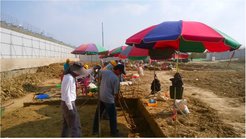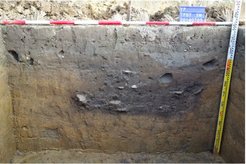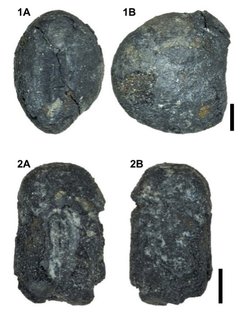Early Agricultural Taiwan
Taiwan is considered a key region for prehistoric cultural dispersal across Asia, although many aspects regarding its role in this process remain obscure. The island is located at the crossroads between East and Southeast Asian traditions and features a rich archaeological record reflecting a high prehistoric cultural diversity that developed particularly after the onset of agriculture about 5000 years ago. These early farmers have been identified as the origin of one of the most spatially extensive language dispersals in world history; the Austronesian expansion. However, there is hot debate about its nature and whether it was carried by spreading farmers (demic diffusion) or by language shifts facilitated and driven by maritime adaptations and capacities.

Another example for our sketchy knowledge about Taiwan’s prehistory is the island’s role in the Asian Metal Age trade and exchange network. The conventional view is that the Metal Age of Taiwan started around 100 CE and that most exchange with outside regions and cultures was through southern mainland China. New archaeological records challenge this understanding, suggesting that the Metal Age started about 500 years earlier and that the cultural influence came from Southeast Asia via the island region to the south.


Information about the use and spread of crops and agricultural practices provides key evidence for the dispersal and amalgamation of people, cultural traditions, and knowledge as well as social organisation and complexity. The project aims to generate detailed long-term and directly dated archaeobotanical records from Taiwan based on systematic analysis of plant macroremains from cultural layers of different archaeological sites. These data will be supplemented by the reconstruction of settlement patterns for estimating spatio-temporal population dynamics. This will provide new insights into the spread of agriculture and sedentism across East and Southeast Asia as part of fundamental economic and social transformations. A better understanding of Neolithisation processes is also relevant to the global society facing migration flows, which are to be expected in response to future climate change. Islands like Taiwan provide excellent opportunities to study how people in the past dealt with challenges like immigration and integration as a result of Neolithic population expansion.
The project is conducted in cooperation with partners from the Department of Anthropology, National Taiwan University, Taipei City, Taiwan; the Museum of Archaeology, Tainan Branch of the National Museum of Prehistory, Tainan City, Taiwan; the Eurasia Department of the German Archaeological Institute, Berlin, Germany; the Institute of Geological Sciences, Freie Universität Berlin, Germany; and the School of Geographical Sciences, University of Nottingham Ningbo China.


